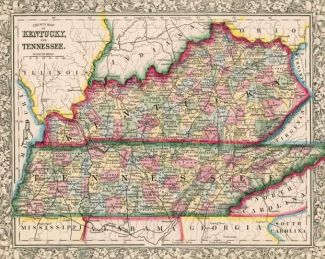 Today’s New York Times reports on a correspondent’s visit to the Murfreesboro battlefield, his visit having taken place mere days following the end of the fighting in the Tennessee town. The reporter describes what he sees.
Today’s New York Times reports on a correspondent’s visit to the Murfreesboro battlefield, his visit having taken place mere days following the end of the fighting in the Tennessee town. The reporter describes what he sees.
…. The field and woods bear marks of heavy firing — scarcely a tree that has not its branches lopped off, or its trunk scarred by the missiles of lead and iron rained among them; while on the ground, imbedded in the half-frozen mud, lie unexploded shells, cannon balls, canister, grape and bullets of every description. In one part of the field was a dismantled Napoleon gun left, or captured from the rebels. A large number of broken and worthless guns were lying about, evidently injured by the owners, as an excuse to quit the field. At the time I visited the ground — four days after the battte — nearly all the dead had been buried, save four poor fellows, who, with their guns beside them, lay behind a fence, having escaped the notice of the burial parties. I heard of some other of our dead who lay in a shattered log house, whither they had gone for shelter, and had there died of their wounds. The rebel dead were buried by our men in trenches, and no estimate can be accurately made as to their number, though it is believed that they largely outnumber ours. On one spot one hundred and fifty dead rebels were counted, lying in heaps, as they had been shot down by our artillery. The field is strewn with dead horses; on one spot the horses of an entire battery were killed….
Murfreesboro is a town which once contained some ten thousand inhabitants, is situated upon a level plain, has two colleges or seminaries — the Baptist Female Institute and the Soule Female College — and an academy for males, six churches and one hotel.
In the centre of the town is a public square, containing a very handsome court-house. Around this square are the principal business-houses of the place. The streets are wide, and contain many handsome residences. At present the place is entirely deserted by its former residents. It was always strongly rebel in sentiment, and the few citizens who were imbued with Union sentiments have been refugees from home since the retreat of BUELL’s army. During my stay, not a store was open, save those taken for the use of Commissary and Quartermasters’ stores. No citizens were upon the streets, nor a woman or child visible — everything in and about the town is military. The General has his headquarters at KEARBY’s house, from the steps of which residence JEFF. DAVIS made his speech to the rebel army, some weeks since. Gen. ROSECRANS looks well. I saw him accompanying some regiments through the town, on Tuesday last. He is reported to have been in excellent spirits all through the fighting of last week, and never to have doubted the ultimate success of our arms. On Wednesday he was where the bullets rained thickest, encouraging his men by his presence, and cautioning them to “Aim low, boys! aim low.” He is constantly attended by his spiritual adviser, Rev. Father TRACY, who accompanys him everywhere.
Our wounded men were removed from the field, and now occupy the hospitals in Nashville, some 2,500 having already been provided for. The First Presbyterian, First Baptist and Methodist churches have all been taken for hospitals, to the intense disgust of the disloyal congregations who formerly assembled there. The National wounded, are also quartered in houses along the Murfreesboro Pike — those who were unable to be carried to Nashville. Owing to the depredations committed upon our trains at Lavergne, and the known disloyalty of its population. Gen. ROSECRANS ordered the place destroyed, and but one house — that an hospital — marks the spot where stood this village….
The story of destroyed and / or confiscated Southern Baptist churches is by now a common tale throughout the areas of the Confederacy visited by battles. It is a story that is far from over.
Sources: “OUR NASHVILLE CORRESPONDENCE.; A Visit to the Battle-Field of Murfreesboro, or Stones River The Probable Losses of the Two Armies Reminiscences Gen. Rosecrans Retaliation, &c.,” New York Times, January 17, 1863 (link)


